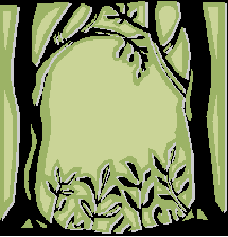METABOLISM OF PLANTS
The diamine putrescine, the triamine spermidine and the
tetramine spermine occur as free cations and as conjugates with phenolic acids
and macromolecules in plants. Their levels of concentration increase greatly
when the environment suffer changes; specially when there is potassium deficiency,
water deficits, salinity stress, anaerobiosis and acid stress ("Polyamines").
Because polyamines are synthesized by amino acid decarboxylation reactions,
where H+ is consumed, levels of polyamines may function as a protection method;
that is haw they conserve the pH values constant ("Polyamines"). Polyamines
are alsoprecursors of various alkaloids that are important in plants defense.
|
Polyamine
|
Structure
|
Occurrence
|
|
Putrescine
|
NH2(CH2)3NH2
|
Widespread
|
|
Cadaverine
|
NH2(CH2)5NH2
|
Restricted
|
|
Spermidine
|
NH2(CH2)3NH(CH2)4NH2
|
Widespread
|
|
Spermine
|
NH2(CH2)3NH(CH2)4NH(CH2)3NH2
|
Widespread
|
("Polyamines")
The first polyamine formed is putrescine. This may happen by decarbosylation
of ornithine or arginine. These reactions are catalyzed by the enzymes orthinine
decarboxylase (ODC) or arginine decarboxylae (ADC), respectively. The polyamines
spermidine and spermine are formed by adding an aminopropyl moeity to putrescine
and spermine, respectively.
Polyamines can occur as free molecular bases in plant cells, but they
also occur as conjugates, associated with small molecules like phenolic
acids and macromolecules such as proteins. Polyamines are most commonly
conjugated to cinnamic acids, preferentially p-coumaric, ferulic and caffeic
acids, and they occur in a wide range of plant families.
Adequate levels of polyamines are necessary for optimal growth and replication
of plants, bacteria and fungi.("Polyamines")
Polyamine Metabolism and Ionic Stress:
1. Potassium deficiency:
Plants undergo great changes in polyamine's levels, especially Putrescine
levels, as a result of nutritional deficiencies. Previous works have shown
that Putrescine accumulates in K+ deficient leaves of tomato, cabbage, radish,
lettuce, pea, beet, oat, rye, tobacco, banana, maize, Ribes nigrum, broad
bean, and spinach. Therefore, diamine accumulation as a result of potassium
deficiency is widespread among mono and dicotyledonous plants. Putrescine
in K+ deficient barley and clover can reach levels of 23 µmol/g dry weight.
Putrescine accounts for at least 20 % of the total plant nitrogen under
these circumstances (Slocum 1991).
2. Other mineral deficiencies:
Deficiency in other minerals and salts such as K, P, Ca, Mg, Fe, Mn, S,
B and KCl also cause increase in the levels of polyamines, but not in such
a striking range as K+ (Slocum 1991).
3. Acid stress:
Under acidic conditions, ADC activity increases. The amines produced by
this, help raise the medium pH to values more favorable to the growth(Slocum
1991).
Polyamine Metabolism and Environmental Changes:
1. Environmental pollutants:
Ozone is an important component of air pollution. It has significant influences
in photosynthesis. Levels of Ozone induce a number of biochemical changes.
One of these changes is the increase in polyamines(Slocum 1991).
2. Heat and drought stress:
The usual response to stress is an increase in one, or sometimes more,
of the polyamines that was already there before the stress. However, under
heat stress, it has been shown that plant cells can induce the formation
a new polyamines. The most common of these polyamines formed under heat
stress are norspermidine and norspermine (Slocum 1991).
Assay of enzyme activities ( ADC, ODC and SAMDC ) (Burtin and
Michael)
:
- Frozen leaf powder is homogenized in 0n1 M Hepes buffercontaining
10 mM dithiothreitol, 10 mM EDTA, 0n1 mM pyri-doxal 5h-phosphate and 0n5%
(w\v) ascorbic acid.
- Insolublepoly(vinyl pyrrolidine) (100 mg\g of powder) is added beforehomogenization.
- The homogenates are centrifuged for 25 minat 17000g and the supernatants
loaded on to a PD10 column (Pharmacia) and eluted with the same buffer minus
the ascorbicacid.
- The eluates are used for analysis of enzyme activity
- Enzyme reaction mixtures contains 100 µl of extract and 20 µl of
radiolabelled substrate
- The ODC assay mixture contains 0n1 µCi of -[1-14C]ornithine (57
mCi\mmol) and unlabelledornithine (2n5 mM). -[U-14C]arginine (0n1 µCi, 307
mCi\mmol) and unlabelled arginine (1n25 mM final concentration) are added
for the analysis of ADC activity.
- For SAMDC activity, 20 µl of 5 µCi\mlS-adenosyl- -carboxy[14C]methionine
dilutedin 4n5 mM unlabelled SAM is used.
- Each reaction is performed in duplicate at 37 mC for 45 min
- The ADC, ODC andSAMDC activities are determined by measurement of
14CO2 released from substrates
Next: Litterfall measurements
References:
Slocum, Robert D. Flores, Hector E. “Biochemistry and Physiology of
Polyamines in Plants.” CRC PRESS. 1991
"What are polyamines?" The Scottish Agricultural College online:http://www.sac.ac.uk/plantsci/External/Research/Polyamines.htm
Burtin, Daniel and Michael, Anthony J. "Overexpression of arginine decarboxylase
in transgenic plants" online: http://www.biochemj.org/bj/325/0331/3250331.pdf



